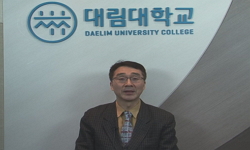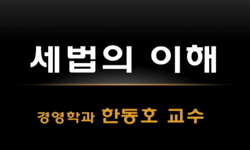After the householder’s retirement, the income of the householder decreases and the alternative income sources become more important. We categorized retired households by income composition and analyzed the influencing factors. The data for this stu...
http://chineseinput.net/에서 pinyin(병음)방식으로 중국어를 변환할 수 있습니다.
변환된 중국어를 복사하여 사용하시면 됩니다.
- 中文 을 입력하시려면 zhongwen을 입력하시고 space를누르시면됩니다.
- 北京 을 입력하시려면 beijing을 입력하시고 space를 누르시면 됩니다.

은퇴가계의 소득원천 구조에 따른 가계 유형화 및 가계특성 분석 = Analysis on the Types of Retired Households by Income Composition and Their Characteristics
한글로보기https://www.riss.kr/link?id=A106112812
- 저자
- 발행기관
- 학술지명
- 권호사항
-
발행연도
2018
-
작성언어
-
- 주제어
-
KDC
300
-
등재정보
KCI등재
-
자료형태
학술저널
-
수록면
161-178(18쪽)
-
KCI 피인용횟수
1
- DOI식별코드
- 제공처
-
0
상세조회 -
0
다운로드
부가정보
다국어 초록 (Multilingual Abstract)
After the householder’s retirement, the income of the householder decreases and the alternative income sources become more important. We categorized retired households by income composition and analyzed the influencing factors. The data for this study is the 6th National Survey of the Elderly and 1,189 retired households were categorized into four types. They are property income type(6.3%), earned income type(58.7%), public transfer income type (18.6%), private transfer income type (16.3%). In the case of property income type, the rate of residence in Seoul was high, and the ratio of female householder of private transfer income based type was higher than other types, and education level of private transfer income based type was significantly lower. Financial assets and real estate assets were highest in the property income type, and next came earned income type, public transfer income type, and private transfer income type. The economic life span was longest in property income type, and next came public transfer income type, private transfer income type, and earned income type. In the case of the asset based income type, the expenditure of accommodation and health care expenditure was high, and the earned income type showed a large expenditure for eating out, clothing, transportation, communication and tobacco liquor purchase. Public transfer income type and private transfer income type showed low consumption level in all items.
참고문헌 (Reference)
1 석상훈, "패널자료로 추정한 소득대체율 분석" 한국보건사회연구원 30 (30): 5-28, 2010
2 황인욱, "중고령 은퇴가구의 소득구성과 의료비 지출의 관계 분석" 한국보건사회연구원 38 (38): 227-256, 2018
3 서영빈, "중고령 가구의 소득원천별 가구소득이 가구소비에 미치는 영향 분석" 한국재정학회 8 (8): 119-147, 2015
4 심영, "저소득층 가계의 경제구조 분석: 경제적 복지를 위한 정책 제언" 한국소비문화학회 15 (15): 213-247, 2012
5 이희숙, "일하는 기간동안의 가계저축행태와 은퇴후 가계소비행태 와의 연계성에 관한 연구" 6 (6): 41-56, 1995
6 신세라, "은퇴자의 은퇴준비과정 및 생활실태분석" 미래에셋퇴직연금연구소 2009
7 이희숙, "은퇴에 따른 가계경제구조의 변화" 한국소비문화학회 16 (16): 171-200, 2013
8 이희숙, "은퇴노인가계의 경제구조 분석" 한국가정관리학회 21 (21): 103-116, 2003
9 김연정, "은퇴노인가계와 취업노인가계의 소득, 지출 및 자산의 비교분석" 36 (36): 57-67, 1998
10 조혜진, "은퇴기 단계에 따른 은퇴자 특성 연구" 한국소비문화학회 14 (14): 139-163, 2011
1 석상훈, "패널자료로 추정한 소득대체율 분석" 한국보건사회연구원 30 (30): 5-28, 2010
2 황인욱, "중고령 은퇴가구의 소득구성과 의료비 지출의 관계 분석" 한국보건사회연구원 38 (38): 227-256, 2018
3 서영빈, "중고령 가구의 소득원천별 가구소득이 가구소비에 미치는 영향 분석" 한국재정학회 8 (8): 119-147, 2015
4 심영, "저소득층 가계의 경제구조 분석: 경제적 복지를 위한 정책 제언" 한국소비문화학회 15 (15): 213-247, 2012
5 이희숙, "일하는 기간동안의 가계저축행태와 은퇴후 가계소비행태 와의 연계성에 관한 연구" 6 (6): 41-56, 1995
6 신세라, "은퇴자의 은퇴준비과정 및 생활실태분석" 미래에셋퇴직연금연구소 2009
7 이희숙, "은퇴에 따른 가계경제구조의 변화" 한국소비문화학회 16 (16): 171-200, 2013
8 이희숙, "은퇴노인가계의 경제구조 분석" 한국가정관리학회 21 (21): 103-116, 2003
9 김연정, "은퇴노인가계와 취업노인가계의 소득, 지출 및 자산의 비교분석" 36 (36): 57-67, 1998
10 조혜진, "은퇴기 단계에 따른 은퇴자 특성 연구" 한국소비문화학회 14 (14): 139-163, 2011
11 김선희, "은퇴가계의 자산구조변화 분석 : 은퇴시점과 은퇴 5년후의 비교" 성신여자대학교 대학원 2010
12 강주성, "은퇴 기간에 따른 가계경제구조 분석" 한국FP학회 10 (10): 35-65, 2017
13 김혜련, "유형별 가계소득과 자산이 소비지출에 미치는 영향 –주거보유 형태별 분석" 37 (37): 91-106, 1999
14 강이주, "알기쉬운 가계경제학" 신정 2006
15 양성강, "심적 회계를 통한 가계 소비지출행태에 대한 고찰" 한국소비자정책교육학회 5 (5): 37-58, 2009
16 박주영, "부모의존 독신성인 자녀를 둔 비은퇴자 가계의 은퇴준비에 대한 평가" 한국FP학회 11 (11): 57-77, 2018
17 양세정, "맞벌이 소비지출유형별 가계경제구조 분석" 20 : 1-23, 2005
18 심영, "노인복지 측면에서 본 충청북도 지역 노인단독가구의 생활환경 분석 및 개선방안" 14 (14): 1-19, 1996
19 양세정, "노인가계의경제구조분석" 19 (19): 173-190, 2001
20 문숙재, "노인가계와 비노인가계의 재정상태 비교 분석" 25 (25): 25-44, 1996
21 한수진, "노인가계 유형별 경제구조 분석" 한국가정관리학회 26 (26): 83-102, 2008
22 최현자, "경제수명의 산정을 통한 한국 가계의 은퇴준비도 측정" 5 (5): 47-71, 2012
23 이기춘, "가정경제학" 교문사 1991
24 가계경제분석, "가계경제분석" 신정 2003
25 박종선, "가계 주 소득 원천과 소득 분위에 따른 가계 유형별 심적 회계 분석" 한국소비자학회 25 (25): 115-144, 2014
26 Friedman, Monroe, "Theory of the Consumption Function" Princeton University Press 2018
27 Ando, Albert, "The “Life Cycle” Hypothesis of Saving: Aggregate Implications and Tests" 53 (53): 55-84, 1963
28 Magrabi, Frances M., "The Economics of Household Consumption" Greenwood Publishing Group 1991
29 노형식, "SPSS를 활용한 조사방법 및 통계분석" 학현사 2011
30 이선우, "Mental Accounting of Retired Household by the Type of Household Financial Strategy" 한국생활과학회 26 (26): 403-417, 2017
31 통계청, "2017년 생명표"
32 통계청, "2016년 가계금융․복지조사" 통계청 2016
동일학술지(권/호) 다른 논문
-
전통문화 공공캠페인 메시지 전략에서 메시지 프레이밍과 메시지 지향성의 역할: 가치지각과 심각성 인식에 대한 영향력을 중심으로
- 한국소비자학회
- 김현철 ( Kim Hyeon-cheol )
- 2018
- KCI등재
-
실패상황에서 고객의 발언에 관한 연구: 고객의 심리적 주인의식과 발언의 관계
- 한국소비자학회
- 김상희 ( Kim Sang Hee )
- 2018
- KCI등재
-
정치정보 비판적 관여도가 소비자 불매운동에 미치는 영향: 정치적 신뢰 및 지역사회 참여의 매개효과를 중심으로
- 한국소비자학회
- 이혜미 ( Lee Hyemi )
- 2018
- KCI등재
-
소비절제 라이프스타일이 상업적 공유 경제 시스템 수용에 미치는 영향: 공유 효용을 중심으로
- 한국소비자학회
- 이희정 ( Lee Hee-jung )
- 2018
- KCI등재
분석정보
인용정보 인용지수 설명보기
학술지 이력
| 연월일 | 이력구분 | 이력상세 | 등재구분 |
|---|---|---|---|
| 2026 | 평가예정 | 재인증평가 신청대상 (재인증) | |
| 2020-01-01 | 평가 | 등재학술지 유지 (재인증) |  |
| 2017-01-01 | 평가 | 등재학술지 유지 (계속평가) |  |
| 2013-01-01 | 평가 | 등재학술지 유지 (등재유지) |  |
| 2010-01-01 | 평가 | 등재학술지 유지 (등재유지) |  |
| 2008-01-01 | 평가 | 등재학술지 유지 (등재유지) |  |
| 2006-01-01 | 평가 | 등재학술지 유지 (등재유지) |  |
| 2004-01-01 | 평가 | 등재학술지 유지 (등재유지) |  |
| 2001-07-01 | 평가 | 등재학술지 선정 (등재후보2차) |  |
| 1999-01-01 | 평가 | 등재후보학술지 선정 (신규평가) |  |
학술지 인용정보
| 기준연도 | WOS-KCI 통합IF(2년) | KCIF(2년) | KCIF(3년) |
|---|---|---|---|
| 2016 | 1.48 | 1.48 | 1.67 |
| KCIF(4년) | KCIF(5년) | 중심성지수(3년) | 즉시성지수 |
| 1.7 | 1.88 | 2.351 | 0.15 |




 KCI
KCI KISS
KISS





